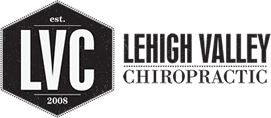Chiropractic for TMJ Disorders
Many cases of TMJ are caused by hypertonic (too tight) muscles, joints and ligaments. Chiropractic care and manual therapy (like myofascial release) is a safe and effective way to treat TMJ Disorders and TMJ Dysfunction. The chiropractors at Lehigh Valley Chiropractic have successful worked with TMJ sufferers to alleviate their pain and related TMJ symptoms with an effective hands-on approach.
TMJD Relief and Chiropractic
There are many studies that link tightness in the head and neck and dysfunction in the cervical spine to TMJ disorders and dysfunction. Treatments like chiropractic adjustments (spinal manipulation), manual therapy (like myofascial release) to structures in the head and neck (like the masseter, ptyergoid, suboccipital, and temporalis muscles and/or the temporomandibular joint itself), and intra-oral (inside your mouth) myofascial (muscle) release, in addition to lifestyle related changes like avoidance of hard foods, stress management, and muscle relaxation exercises has “worked wonders” for our TMJ patients.
We encourage TMJ sufferers to try safe alternatives like chiropractic care for the management of their TMJ symptoms before taking medications, undergoing invasive dentistry procedures, Botox injections or prior to undergoing surgery. Chiropractic and myofascial therapy TMJ solutions can be just the answer you’ve been looking for.
References
- Myofascial pain of the jaw muscles: comparison of short-term effectiveness of botulinum toxin injections and fascial manipulation technique. Guarda-Nardini L, Stecco A, Stecco C, Masiero S, Manfredini D.
- Cranio. 2012 Apr;30(2):95-102.
- Physiotherapy in the management of disorders of the temporomandibular joint–perceived effectiveness and access to services: a national United Kingdom survey.
- Rashid A, Matthews NS, Cowgill H. Br J Oral Maxillofac Surg. 2013 Jan;51(1):52-7.
- Intraoral myofascial therapy for chronic myogenous temporomandibular disorder: a randomized controlled trial.
- Kalamir A, Bonello R, Graham P, Vitiello AL, Pollard H. J Manipulative Physiol Ther. 2012 Jan;35(1):26-37.
- Referred pain from muscle trigger points in the masticatory and neck-shoulder musculature in women with temporomandibular disoders.Fernández-de-Las-Peñas C, Galán-Del-Río F, Alonso-Blanco C, Jiménez-García R, Arendt-Nielsen L, Svensson P. J Pain. 2010 Dec;11(12):1295-304.
- The immediate effects of atlanto-occipital joint manipulation and suboccipital muscle inhibition technique on active mouth opening and pressure pain sensitivity over latent myofascial trigger points in the masticatory muscles.
- Oliveira-Campelo NM, Rubens-Rebelatto J, Martí N-Vallejo FJ, Alburquerque-Sendí N F, Fernández-de-Las-Peñas C. J Orthop Sports Phys Ther. 2010 May;40(5):310-7

 610-868-6800
610-868-6800



